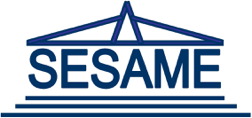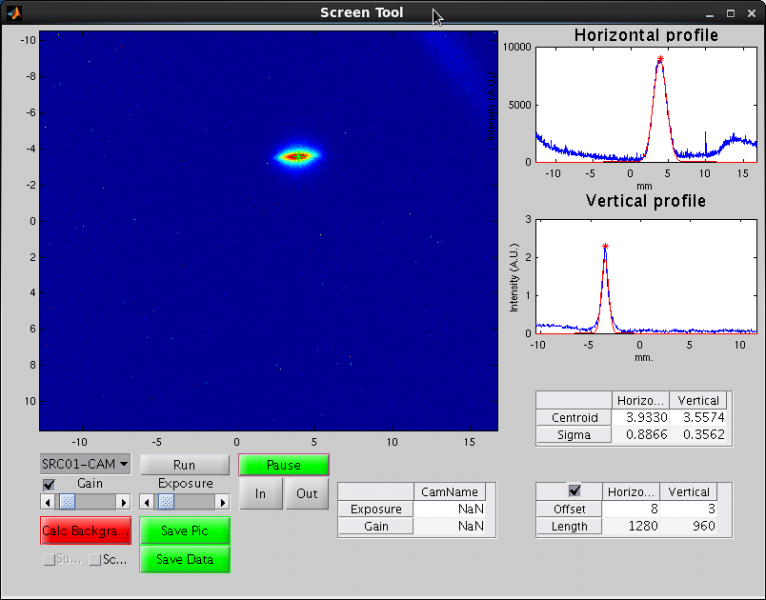On behalf of SESAME

Allan, Jordan, 12 January 2017. A beam circulated for the first time in the pioneering SESAME synchrotron at 18:12 (UTC+2) yesterday. Following the first single turn, the next steps will be to achieve multi-turns, store and then accelerate a beam.
This is an important milestone on the way to research getting underway at the first light-source laboratory in the Middle East. SESAME was established under the auspices of UNESCO before becoming a fully independent intergovernmental organisation in its own right in 2004. SESAME’s Members are Bahrain, Cyprus, Egypt, Iran, Israel, Jordan, Pakistan, the Palestinian Authority and Turkey. Its mission is to provide a world-class research facility for the region, while fostering international scientific cooperation. The first call for proposals to carry out research at SESAME was recently issued.
“This is a very proud moment for the entire SESAME community,” said Professor Khaled Toukan, SESAME Director. “SESAME is now opening for business.”
SESAME, which stands for Synchrotron-light for Experimental Science and Applications in the Middle East, is a light-source; a particle accelerator-based facility that uses electromagnetic radiation emitted by circulating electron beams to study a range of properties of matter. Experiments at SESAME will enable research in fields ranging from medicine and biology, through materials science, physics and chemistry to healthcare, the environment, agriculture and archaeology.
Today’s milestone follows a series of key events, including the establishment of a Middle East Scientific Collaboration group in the mid-1990s. This was followed by the donation of the BESSY1 accelerator by the BESSY laboratory in Berlin. Refurbished and upgraded components of BESSY1 now serve as the injector for the completely new SESAME main ring, which is a competitive third-generation light source built by SESAME with support from the SESAME Members themselves, the European Commission, CERN and Italy.
“This is a great day for SESAME,” said Professor Sir Chris Llewellyn-Smith, President of the SESAME Council. “It’s a tribute to the skill and devotion of the scientists and decision-makers from the region who have worked tirelessly to make scientific collaboration between countries in the Middle East and neighbouring regions a reality.”
The first circulating beam is an important step on the way to first light, which marks the start of the research programme at any new synchrotron light-source facility, but there is much to be done before experiments can get underway. Beams have to be accelerated to SESAME’s operating energy of 2.5 GeV. Then the light emitted as the beams circulate has to be channelled along SESAME’s two day-one beam lines and optimised for the experiments that will take place there. This process is likely to take around six months, leading to first experiments in the summer of 2017.
In the meantime, scientists wishing to carry out research at SESAME are encouraged to submit their proposals following the procedure described here.
Resources
SESAME Press Release available here.
Images available at:
http://cds.cern.ch/record/2237478
http://cds.cern.ch/record/2201539
http://cds.cern.ch/record/2227099
http://cds.cern.ch/record/2238520
http://cds.cern.ch/record/2009159
http://cds.cern.ch/record/1995397
Contact
James Gillies: James.Gillies@cern.ch +41 75 411 4555
Clarissa Formosa-Gauci: c.formosa-gauci@unesco.org

1. CERN, the European Organization for Nuclear Research, is the world's leading laboratory for particle physics. Its headquarters are in Geneva. Its Member States are: Austria, Belgium, Bulgaria, Czech Republic, Denmark, Finland, France, Germany, Greece, Hungary, Israel, Italy, Netherlands, Norway, Poland, Portugal, Romania, Slovakia, Spain, Sweden, Switzerland and United Kingdom. Cyprus and Serbia are Associate Member States in the pre-stage to Membership. Pakistan, Turkey and Ukraine are Associate Member States. The European Union, India, Japan, JINR, the Russian Federation, UNESCO and the United States of America currently have Observer status.
